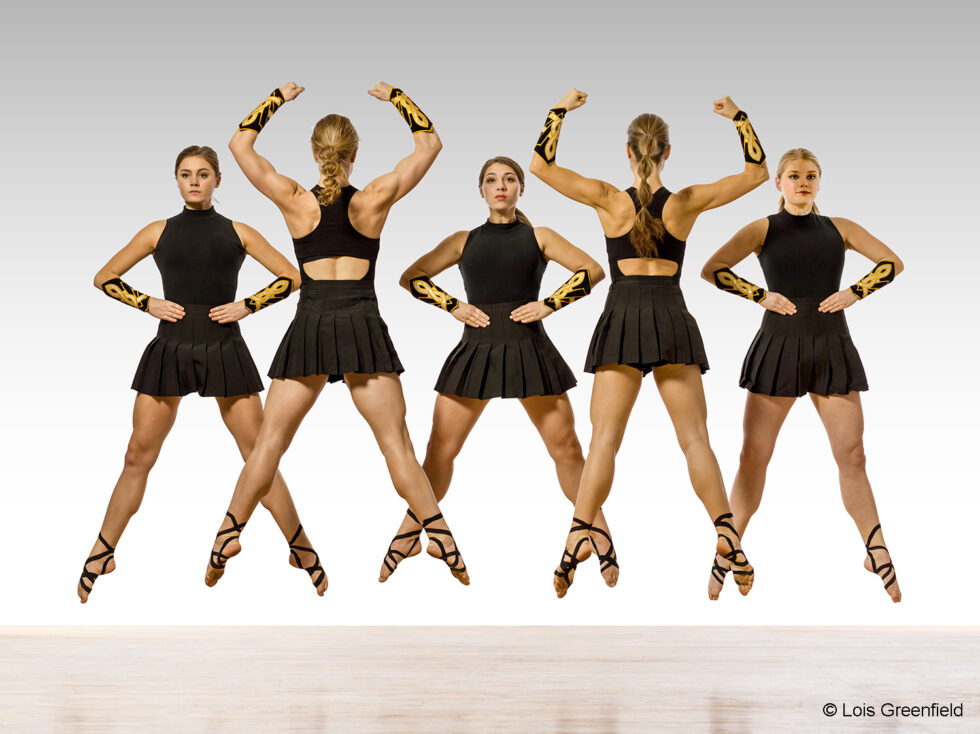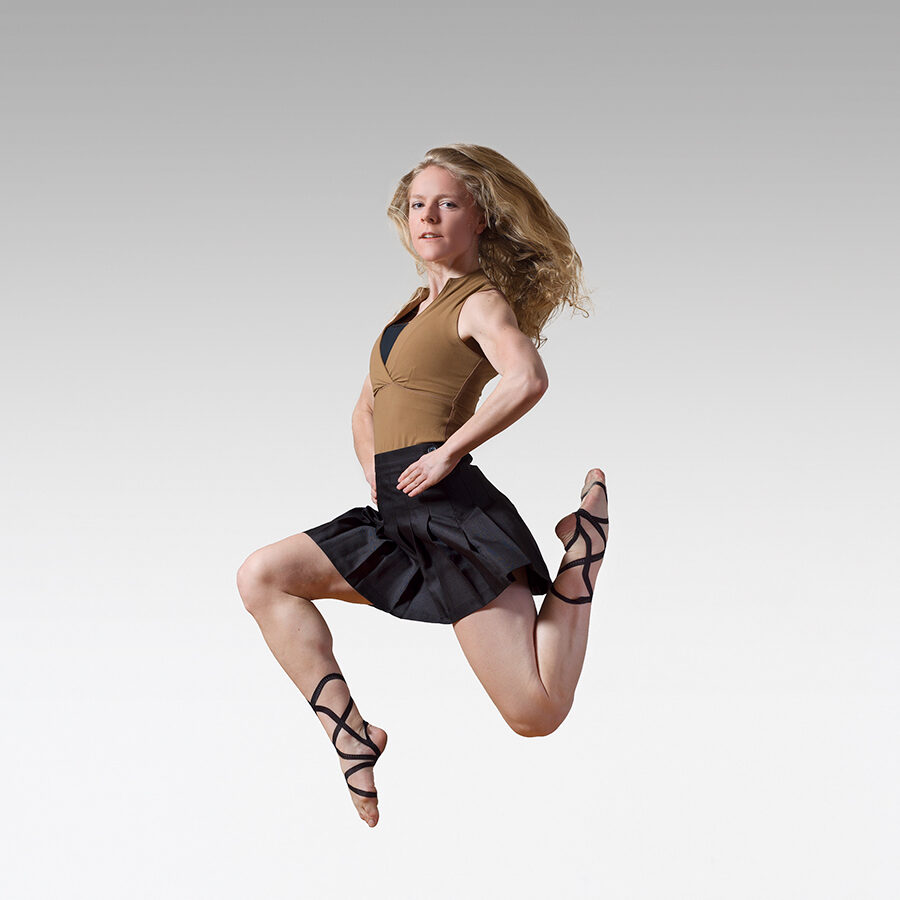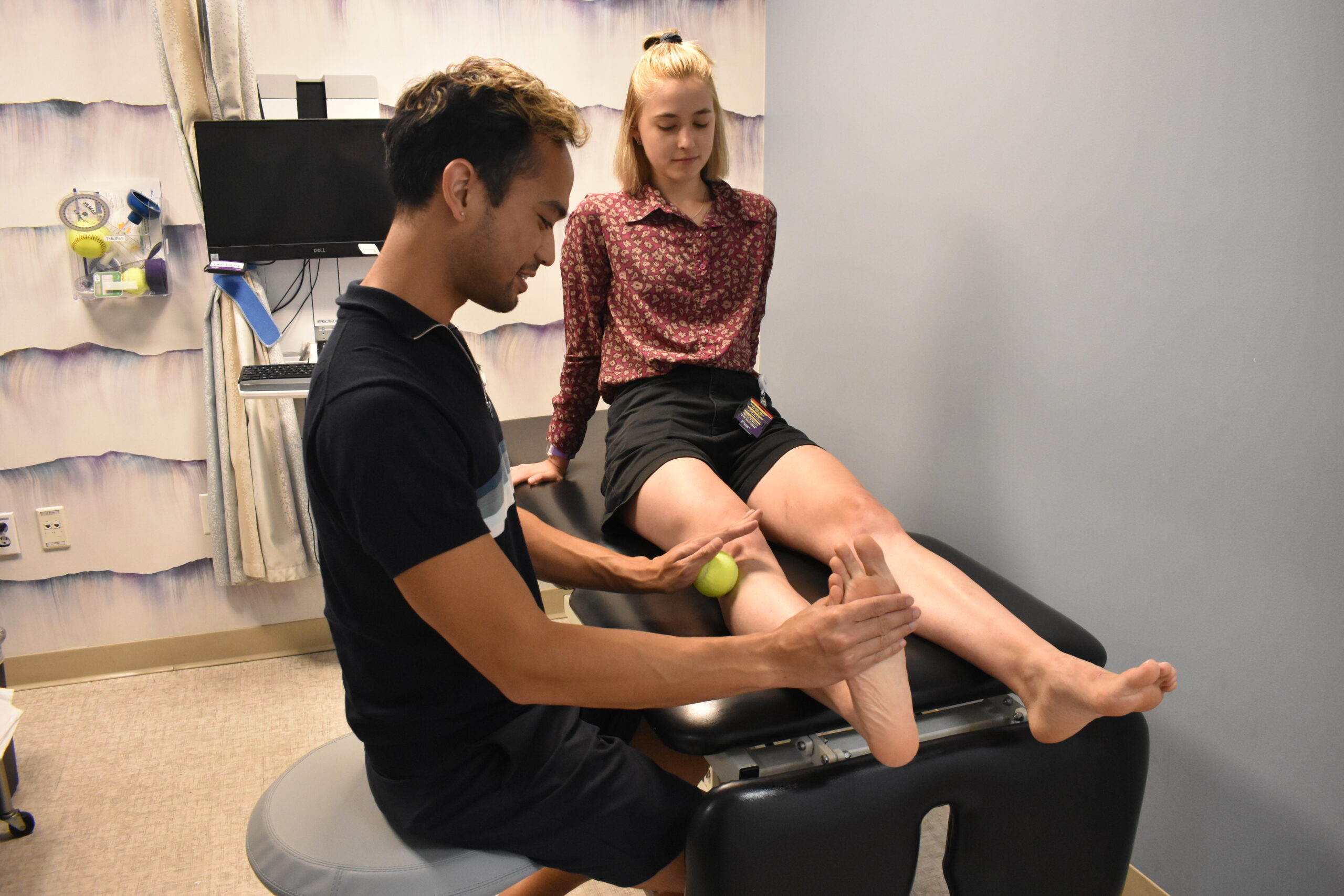Tips For Preventing and Managing Shin Splints
Chelsea Hoy, an associate artistic director and performer with Trinity Irish Dance Company, has battled shin splints throughout her career. She says the condition, which manifests as pain down the front of the lower leg, was most bothersome during the two-hour performances that comprise the company’s multicity tours. “You’re in your Irish soft shoes soaring through the air, and then you’re in your hard shoes laying down the thunder,” she says, “and the combination of those things is what makes this form very intoxicating for audiences. It also puts a very unique strain on the body.”
Although shin splints have presented a challenge for Hoy, she says she’s learned ways to manage the condition and curb flare-ups so she can continue to perform. With an intentional, prevention-focused approach, dancers can get ahead of shin splints so they don’t put a damper on dancing.
What Are Shin Splints?
Shin splints, or medial tibial stress syndrome, refers to “pain in the muscles on the front of the lower leg, below the knee and along the shin bone,” says Joshua Honrado, DAT, an athletic trainer who works with dancers at NYU Langone’s Harkness Center for Dance Injuries. Dancers are particularly prone to shin splints, especially when they experience a sudden increase in rehearsals or performances, such as during Nutcracker season. “Exercise naturally increases blood flow to the muscles, causing the muscles to expand,” Honrado explains. “This is a natural occurrence, but if the body isn’t able to heal efficiently after continuous bouts of intensity, the intramuscular pressure will continue to build up, making it hard for the body to heal properly.”

Getting the Right Treatment
Typically, shin splints are easy for a health-care provider to diagnose, Honrado says, but it’s important to seek professional guidance to ensure you aren’t suffering from a more serious injury, like a stress fracture. Pain on the bone, or a feeling of numbness or tingling, can be indicative of a larger issue.
For dancers who are experiencing shin splints, a doctor might prescribe an X-ray or a compartment pressure measurement test (which gauges the difference in intramuscular pressure before and after physical activity). For shin splints, the first step to recovery is often rest or modification. “Reducing training volume, whether this means decreasing the amount of jumps or relevés, will help decrease the intramuscular pressure,” Honrado explains, adding that “this doesn’t necessarily mean needing to completely stay out of dance.”
Hoy says that icing before and after performances and using tape to “give a little extra security” were key to her managing shin splints. She also recommends finding a health-care practitioner specializing in dry needling to help release the muscles in the shin area.
Preventing Future Flare-Ups
For dancers who are prone to shin splints, it’s helpful to anticipate stressors. When there’s an increase in dance-related demands, such as a busy performance season or learning a new piece of choreography with a lot of jumping, Honrado recommends slowly ramping up exercise to prepare the body. “Gradually incorporating plyometric exercise around two to three weeks before this increased bout of dance is important in order to gradually build up that muscular endurance and flexibility so there isn’t a shock of a rapid increase in intramuscular pressure,” he explains.

If leaps or extended periods of jumping aggravate the shin splints, Honrado recommends starting with a very basic jumping program (he suggests sautés and changements in parallel, first, and second positions, as well as prances in parallel) for about five minutes, three times per week. For those with access to a Pilates reformer, working with the jump board is also a good option. Honrado says that high-intensity interval training (HIIT) might also be an effective way to incorporate muscular endurance and cardio-respiratory exercise, but he tells dancers to be mindful of the intensity, as these classes could aggravate shin splints if they aren’t part of a tiered ramp-up process.
It’s also important to be honest with your teacher, choreographer, or artistic director when you’re battling shin splints. Speaking as both a dancer and member of the artistic staff at Trinity Irish Dance Company, Hoy encourages dancers to be transparent about how they are feeling. “We want to protect [dancers] in the long run,” she says. “As an organization, we need our dancers to be as healthy as they can, but it’s also for their life, as well, because those injuries can carry through whether you’re still in your career or you’ve retired.”





